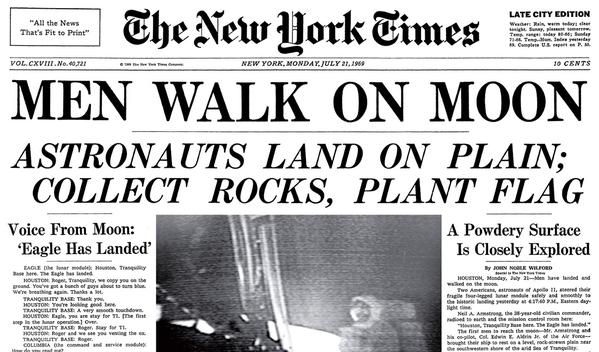Impact

Image courtesy of The New York Times and Chronicling in America.

Image courtesy of The New York Times and Chronicling in America.
The Apollo 11 along with the rest of the Apollo program spent an estimated $176 billion dollars from 1962 to 1972(the year of the last Apollo mission). The fact that the U.S spent all this money, made the public very unhappy about the whole Apollo project. "Only about 50 percent of the U.S actually wanted to go to the moon, and the rest disagreed because it cost billions of dollars and noted that the U.S was also in the Vietnam War, but the Apollo mission not only spent a great amount of money but actually helped the U.S" (DiCicco).
Apollo 11 created many new inventions, during that time, NASA created over 6,300 inventions that we use in our daily lives, things that include the computer microchip, cordless tools, and the smoke detectors. Our economy was impacted by these inventions because it produced more revenue. An example of this is the company Intel, a computer chip company that used the invention of the computer chip. Without NASA the computer wouldn't have gone so far as it has had.

NASA Apollo 11 spacecraft computer with computer microchip showing (Image coutesy of NASA)
An estimated 530 million people around the globe watched the landing on Sunday July 20, 1969. They watched in amazement, the first human take a small step on lunar surface. That was five times the number of people who watched the Super Bowl. The moon landing was all anybody could talk about at the time. People realized the U.S.'s rocket capabilities, therefore respecting the U.S. greatly. "There was also controversy about whether the landing was real. Some people believed it was fake and filmed by Hollywood. Because of this, NASA specifically made a moon-resistant camera so that people on Earth knew that it actually did happen" (Botkin-Kowacki).
One of the replicas of the real life sized footprints of Neil Armstrong's space boots found on Purdue University's campus (Photo taken by Citlalli Alaniz)